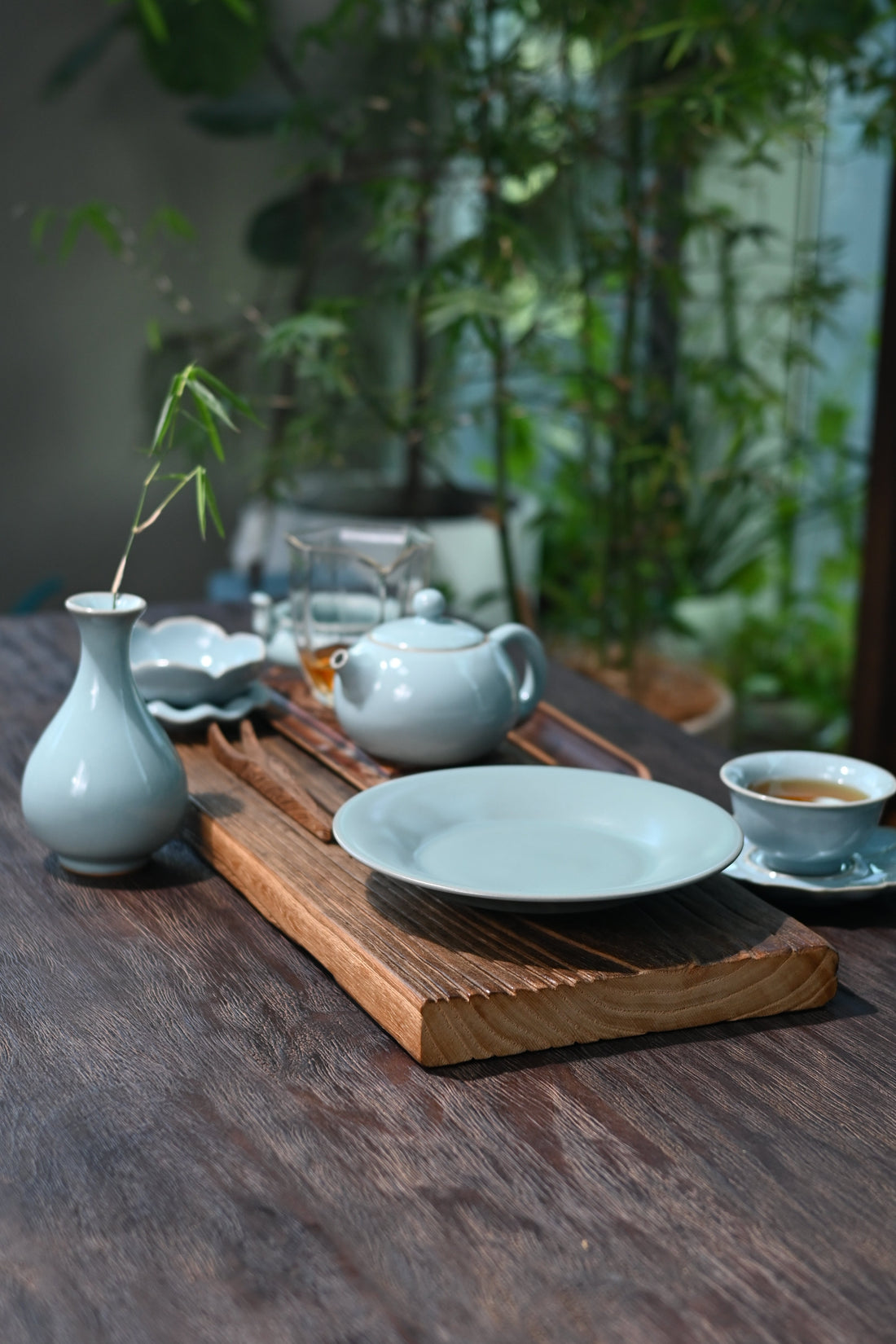
Types of Crack Patterns in Ru Porcelain
Crab Claw Pattern
The crack patterns on Ru official porcelain are delicate and fine, resembling the fine hairs of a crab’s claw. Some interpret the crab claw pattern as crab claw hair lines.
Both early and later Ru official porcelain pieces may have "fish eyes," which are small pits left behind when bubbles in the glaze burst. Since crabs walk instead of crawl, if one walks across soft sand, it leaves behind isolated small pits. On Ru official porcelain, such marks on the glaze surface are referred to as crab claw patterns.

Fish Scale Pattern
The fish scale pattern consists of four or five diagonal cracks surrounding a straight crack, forming a polygonal shape. These polygons resemble the scales of a crucian carp, hence the name "fish scale pattern."
When light hits at the right angle, the diagonal cracks forming the scales appear with white edges, similar to the borders of fish scales. The areas outside the white edges take on a bluish-green hue, resembling the main body of the scale, while the straight cracks connecting them lack white edges, mimicking the base of the scales.

Net Pattern
Also known as the "web pattern," this refers to a dense, interwoven texture. The intersecting vertical and horizontal crack lines divide the glaze into an irregular mesh of varying sizes, creating an uneven network. Many official Ru porcelain pieces feature this net-like crack distribution, appearing as either a fine fishing net or a structure with sieve-like pores.
The mesh size is generally uneven, with fine cracks being transparent and broken lines forming a compact, intersecting pattern of small pores. Long, continuous cracks are rare, and the fine lines are usually subtle and transparent.
Freshly fired official Ru porcelain has colorless crack lines, but as time passes, these lines may be influenced by gray or brown dyeing effects, which result in gray or earthy tones. This direct ink-staining technique dates back to the Qing dynasty, and its artistic appeal has continued to be appreciated over time. However, such staining techniques were not used in Southern Song official Ru porcelain.

Ice Crack Pattern
The ice crack pattern is a common feature in Southern Song official Ru celadon. The texture resembles thin ice cracks, with the ends of the cracks tapering into sharp points. The patterns appear as slanted, straight, or arched irregular lines, often intersecting. Some patterns remain hidden beneath the glaze, while others are deep or shallow, appearing and disappearing over time. They are most prominent in thicker glazes. Regardless of thickness, these patterns are always clearly visible to the eye but not felt to the touch.
Ice crack patterns are generally fine and extend deep into the glaze, appearing to weave and overlap. Their color is usually transparent and uncolored, but exposure to external substances can cause them to take on hues such as earthy yellow or deep purple. These cracks may cover the entire piece or appear in localized areas. Based on their direction of development, ice crack patterns belong to the category of secondary cracks.

Willow Leaf Crackle
Formation and Natural Beauty
The Willow Leaf Crackle Pattern in Ru Ware is an organic glaze effect formed due to differences in the expansion rates of the iron-rich clay body and the glaze. During cooling, the glaze shrinks and develops fine, elongated cracks that taper at both ends, resembling the graceful curve of willow leaves swaying in the wind. These crackles appear naturally flowing, with varied density, creating an elegant, rhythmic visual effect. Though random, their formation is influenced by glaze thickness and firing temperature.
Subtle and Timeless Aesthetics
Initially faint, Willow Leaf crackles are often barely visible, much like the shallow Cicada Wing Crackle commonly found in Ru Ware. With time, exposure to tea, air, and natural oxidation gradually enhances their appearance, bringing out delicate golden or light brown hues. This evolving transformation reflects the philosophy of appreciation through time, making each piece more treasured with use.
Harmonizing with Sky-Blue Glaze
The Ru Ware glaze, often described as “the sky after rain”, blends seamlessly with the willow leaf crackles, evoking an image of raindrops trailing across the sky. This interplay of soft blue and delicate lines embodies the Song Dynasty’s pursuit of understated beauty, where nature’s imperfections enhance artistic charm.

Final Tips
Ru porcelain does not necessarily develop crackles. The formation of crackles primarily depends on the difference in expansion coefficients between the body and glaze, the firing temperature, and the cooling process. If the body and glaze are well-matched and the cooling is even, the glaze tension remains low, preventing crackles from forming. Therefore, crackles in Ru porcelain are a naturally occurring phenomenon rather than an absolute certainty.

1 comment
I have a mallet vase that would like for you to describe the crackle